We may receive a commission when you use our affiliate links. However, this does not impact our recommendations.
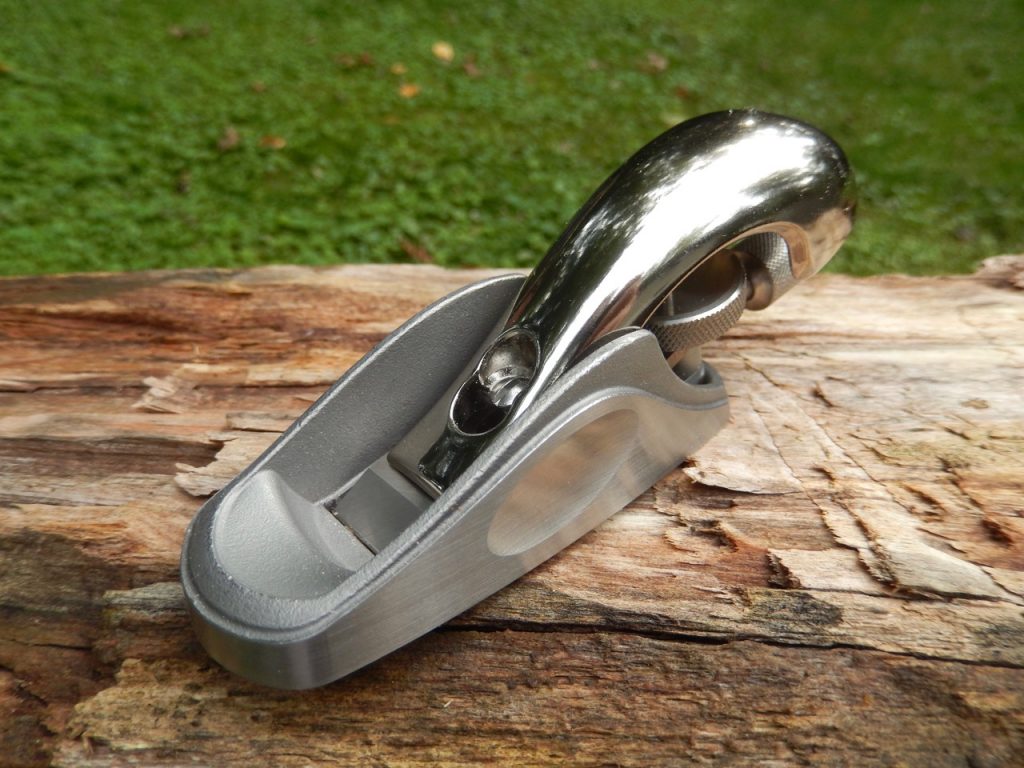
Veritas Pocket Plane
A few weeks ago Veritas tools (Lee Valley) released their most recent plane. The squirrel-looking plane (there are actually two versions of it: a limited edition stainless steel, and a continuous production cast iron) is by far one of the smallest planes around. At 4 -½” long it is described as a plane for delicate trimming work, suitable for instrument building and model making tasks. The plane is also advertised as a small and light plane that can be carried around in the pocket of your shirt or apron.
I have seen planes as small as this, but they never came with blade advancement/retraction and lateral adjustment properties such as the one found in this new gizmo from Veritas. The plane’s tiny Norris style mechanism is very easy to understand and to work with. It also provides a more predictable way of controlling the blade than using a hammer.
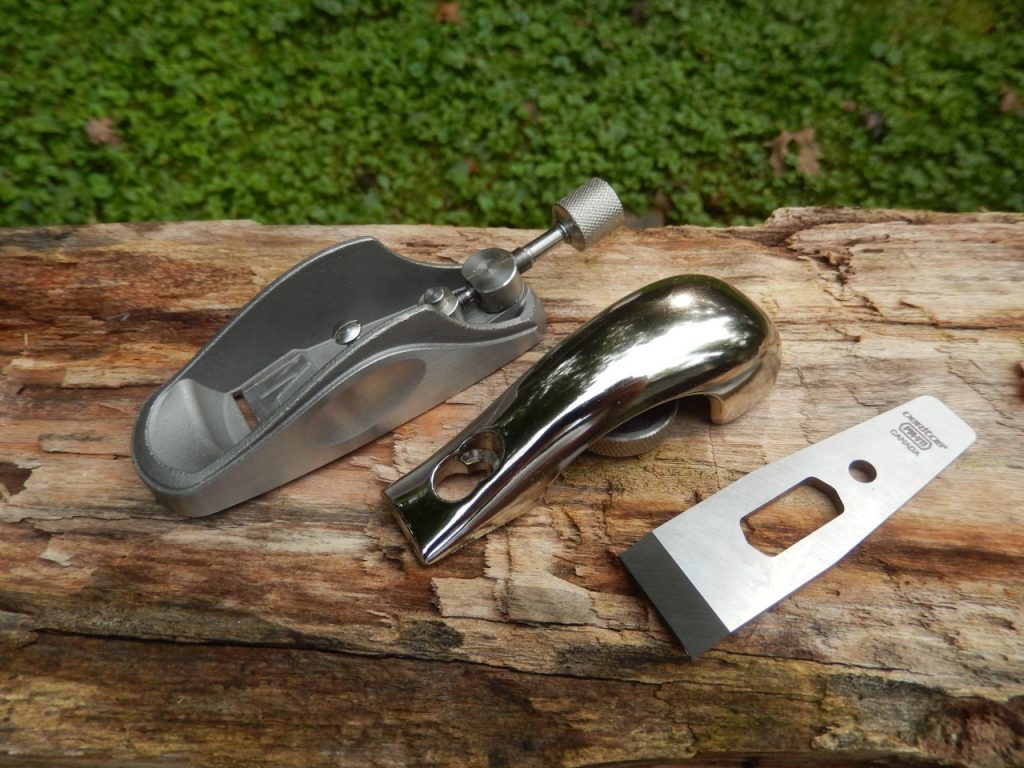
Both the body and the Norris mechanism of the slick looking, limited edition plane are made of stainless steel. The lever cap is made from a zinc alloy, then plated with nickel. The blade is made of PM-V11 steel.
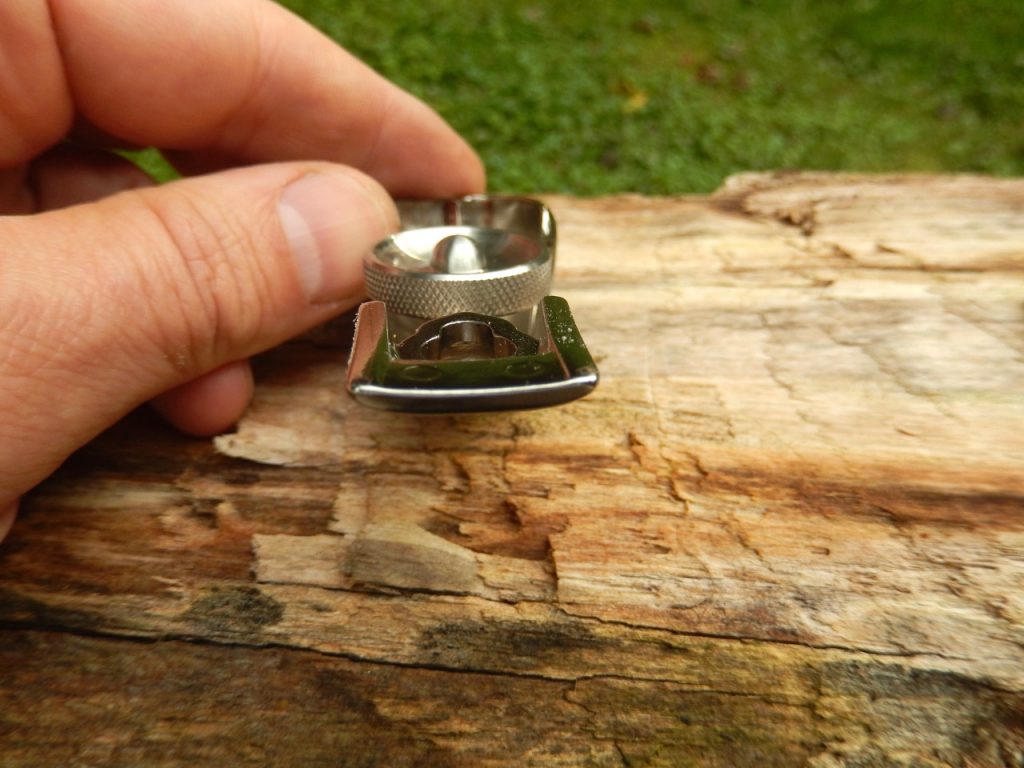
The cap iron is vaulted at the area of contact with the blade. That means that it doesn’t provide a uniform pressure across the width of the blade, but rather on two points – left and right sides. Because the blade is so thick I don’t think that this untypical geometry is of concern. But, I do wonder if this might cause some issues with wood chips stuck under the vault.




The stainless version that I bought is a nice shaving machine. It is brilliantly ergonomic and has new comfy features such as the swirling tail of the lever cap, which protects the palm from the knurled Norris nut, and prevents inadvertent engagement of this mechanism. Plus, it just looks cool. But I would like to point out two issues that I was not completely happy with.
The first one is the mouth, or throat, opening. At the most retracted blade position, where the plane produces the thinnest shavings, the gap between the tip of the blade and the sole’s corner is 1/32” (about 1mm). I feel that this is a bit too wide, especially for such a small plane where the user expects it to be an accurate instrument for “surgical” work. Since a small mouth opening is crucial for reducing tear-out when planing figured woods, such as curly maple and many exotic woods, I would have liked to see this gap reduced somehow. I wonder if Veritas can supply the buyers with a plastic shim, like the one that comes with their spokeshaves.


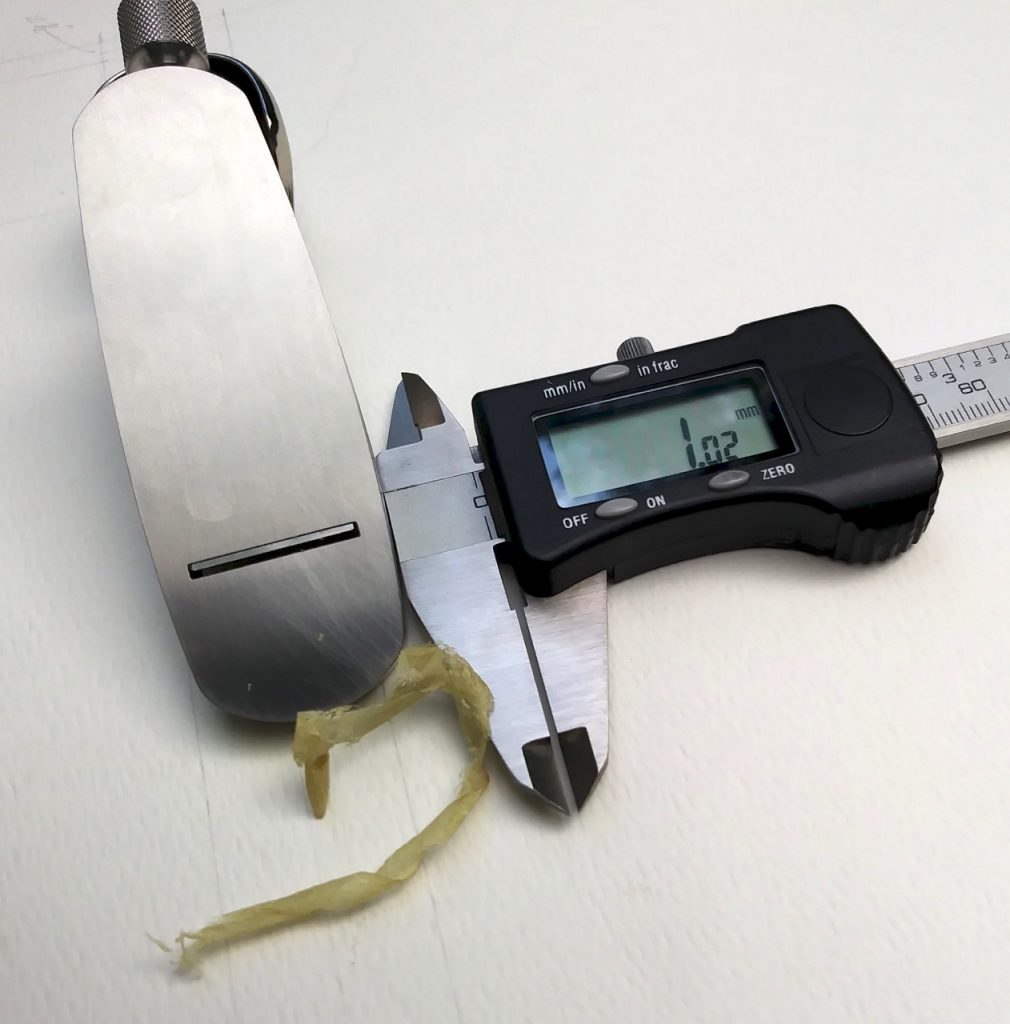
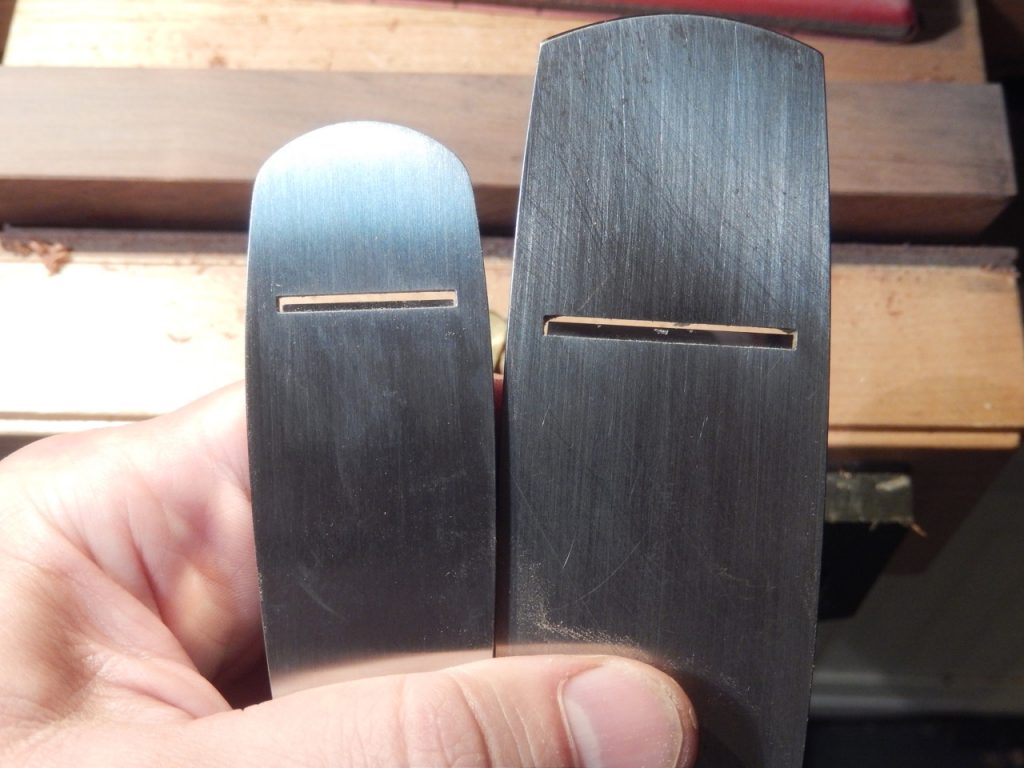
Side by side, the Lie Nielsen 102 plane (one of my favorite planes) which is bigger and longer, and the Veritas Pocket plane. Notice how the Pocket plane, although smaller, has actually a wider mouth opening.
The second issue is a bit more systemic and has to do with how the blade is held in a honing guide for sharpening. I believe that Veritas should consider altering the design of the blade, modify the Veritas honing guide, or offer a special cradle to mount in their guide, in order to make blade sharpening an easier job.
Whether your plane is old or new, discover tips that will make it perform with surgical precision. With just a little effort and a couple hours, you can turn any handplane into a super-tuned, high-performance tool with Super-Tune a Handplane.
Sharpening the Blade with Veritas Honing Guides
For years I have been successfully using the Veritas Mk.II honing guide. I like its practicality and accuracy. I own the two optional clamping heads that come with it, but my favorite is the Narrow-Blade Head. I discovered that it allows me to sharpen and hone more than just narrow blades: with its robust parallel jaw clamps it is also great for sharpening shoulder plane blades, narrow block plane blades and more.
Since the blade of the Veritas pocket plane is quite short and narrow, I thought that the best honing guide head to mount it should be the Narrow-Blade one, but I was wrong. When trying to set the angle at 25° I discovered that the trapezoid shape at the blade’s middle and rear sections prevented it from being clamped – at all.


Next, I tried to hold it at 30° and encountered the same problem.


Only when I set the angle to 35° was I able to clamp the blade, albeit not perfectly, as only a portion of the parallel edges of the blade were clamped between the jaws.


Then I tried the Standard Head, but here too things were not ideal. Forget about holding it at 20° to re-establish the primary bevel that Veritas recommend – the blade will move or fall off the guide. At 25° the blade is clamped okay-ish. Only when you set the angle for a 30° and higher can the blade be adequately clamped for sharpening and honing.








So What Can You Do?
One sharpening option that I thought about was to create a hollow grind to eliminate the need for a guide. But because the blade is very short, this can be tricky. I am not saying it can’t be done, I am just saying that you will have to be careful on the grinder. Then there is the option of using the Lie Nielsen honing guide mounted with a pair of the Long Jaws. And last but not least is the Richard Kell honing guide which is perhaps the best guide for short blades.

Can Veritas Improve the Pocket Plane?
The answer is YES. If they change the geometry of the blade and increase its parallelism on the expanse of the elegant (but annoying for sharpening) trapezoid proportions, the blade could be nested securely inside the convenient Narrow-Blade Head — an outcome that will make many users happier.
See the plane in action saving and edge and forming a chamfer on a piece of Mahogany.
After I published this blog entry, Derek Cohen emailed me some informative images of the Veritas’s cast iron Pocket plane along side the Lie Nielsen 101. Read Derek’s comments below.
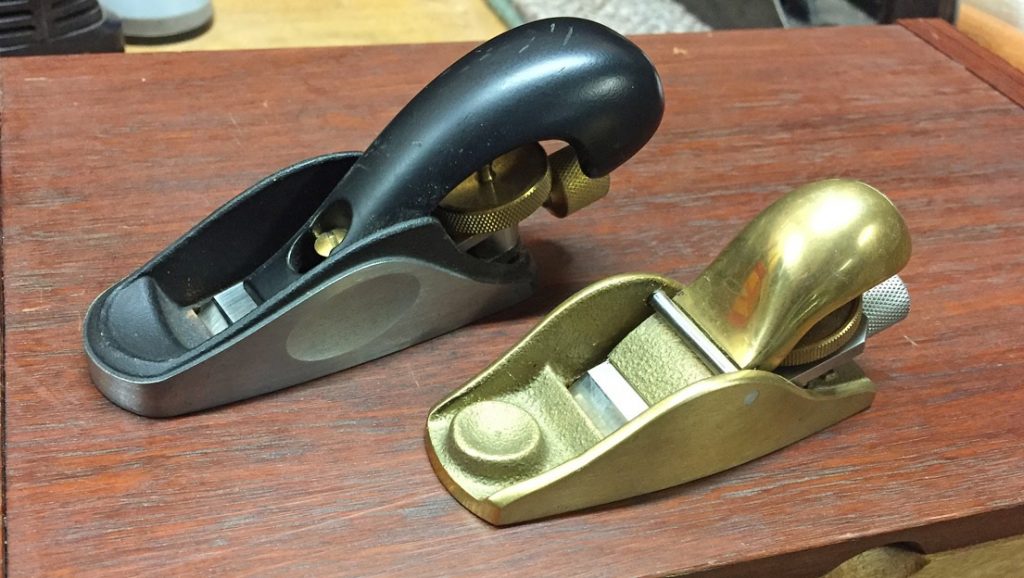





Here are some supplies and tools we find essential in our everyday work around the shop. We may receive a commission from sales referred by our links; however, we have carefully selected these products for their usefulness and quality.









Could you not use the ”green” back bevel settings on the veritas jig to grind the 20 degree primary bevel? Just a thought. Thank you for the review.
Hi Patrick, I tried the green setting too, but unfortunately it did not help either. At 20 degrees on the green setting (Narrow head) the parallel clamps did not have enough surface to grab onto. In fact they held the blade’s trapezoid edges – which is a problem.